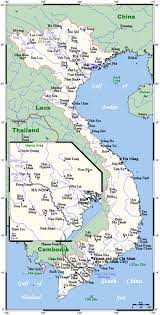Vietnam is a country blessed with a diverse and spectacular range of mountain systems that traverse its vast landscape. From the towering peaks of the north to the rugged ranges of the central region, and the rolling hills of the south, Vietnam’s mountainous terrain is a testament to the country’s natural beauty. In this article, we will explore the magnificent mountain ranges and their significance in shaping Vietnam’s geography and culture.

- Hoang Lien Son Range:
Located in the northwestern part of Vietnam, the Hoang Lien Son Range is a majestic mountain system that stretches along the border with China. This range is home to Fansipan, the highest peak in Indochina, standing at an impressive 3,143 meters (10,312 feet). The Hoang Lien Son Range is characterized by its rugged terrain, deep valleys, and pristine forests, offering breathtaking vistas and opportunities for trekking and mountaineering adventures. - Truong Son Range (Annamite Range):
Spanning from the northwest to the central region of Vietnam, the Truong Son Range, also known as the Annamite Range, is a prominent mountain system that plays a significant role in the country’s geography and biodiversity. This range forms a natural boundary between Vietnam and Laos and is renowned for its dense forests, abundant wildlife, and picturesque waterfalls. The Truong Son Range is home to many protected areas, including national parks such as Phong Nha-Ke Bang and Bach Ma, which preserve Vietnam’s rich ecological heritage. - Central Highlands:
The Central Highlands region of Vietnam is characterized by undulating hills and plateaus, forming a unique mountainous landscape in the country’s interior. The region is dotted with several mountain ranges, including the Chu Yang Sin, Kon Tum, and Pleiku Plateau. The Central Highlands are known for their temperate climate, fertile soils, and diverse ethnic minority cultures. This region is a haven for nature lovers, offering opportunities for exploring national parks, waterfalls, and coffee plantations. - Ba Vi Range:
Situated just outside Hanoi, the Ba Vi Range is a small but picturesque mountain range that serves as a popular weekend retreat for city dwellers. With its three prominent peaks—Ba Vi, Tan Vien, and Ngoc Hoa—this range offers scenic landscapes, lush forests, and ancient temples. Ba Vi National Park, located within the range, is a nature lover’s paradise, offering hiking trails, biodiversity, and panoramic views of the surrounding countryside. - Song Ma Range:
Located in the northwest region of Vietnam, the Song Ma Range is a lesser-known but captivating mountain system. This range is characterized by its rugged and remote nature, making it a destination for adventurous travelers seeking off-the-beaten-path experiences. The Song Ma Range is home to ethnic minority communities, whose way of life is deeply intertwined with the mountains and forests.
These mountain ranges, along with numerous other smaller ranges and hills, contribute to Vietnam’s stunning and diverse topography. They not only offer breathtaking natural landscapes but also influence the country’s climate patterns, river systems, and cultural heritage. The mountains of Vietnam have shaped the lives of its people, serving as a backdrop for ancient traditions, agricultural practices, and spiritual beliefs.
Whether you are a nature enthusiast, an adventure seeker, or a cultural explorer, the mountain ranges of Vietnam beckon with their awe-inspiring beauty and captivating allure. Explore the rugged peaks, hike through verdant forests, encounter unique wildlife, and immerse yourself in the rich tapestry of Vietnam’s mountainous wonders.









